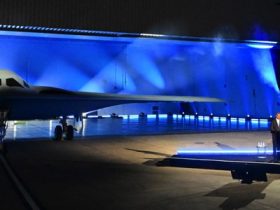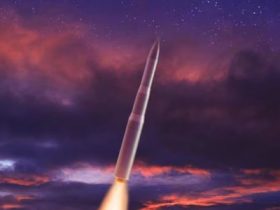Peter Balazy is President/CEO of Andworx, which moves organizations forward using Microsoft cloud technologies. Andworx is part of Task Force Telesto, a Groundswell initiative assembled for the US Army EBS-C Business Modernization and Transformation effort.
In an era where technological advancement underpins every facet of national security, the integration of Microsoft and SAP technologies stands as a cornerstone in the modernization efforts of the U.S. Department of Defense (DOD). As defense organizations navigate an increasingly complex global landscape, the fusion of these platforms is not just strategic; it’s imperative for maintaining the operational edge and readiness of the armed forces.
The modern Enterprise Resource Planning (ERP) system has evolved and continues to evolve to integrate artificial intelligence, machine learning, and technology platforms with microservices to empower the end users and enable future modernization. The necessity for modernized ERP systems within the DOD cannot be overstated. These systems act as the backbone, supporting a myriad of crucial functions, from logistics and finance, to human resources and analytics. Through modernization we can capitalize on evolving functionality and reduce sustainment costs. As we move forward, the role of ERP systems like SAP is evolving from traditional back-office operations to become central command posts for data-driven decision-making and strategic governance.
The convergence of SAP’s robust ERP capabilities with Microsoft’s cloud and productivity tools creates an ecosystem where efficiency, security, and agility not only meet, but are better together. This integration leverages the best of both worlds—SAP’s powerful processing capabilities and Microsoft’s ubiquitous computing platforms including Azure, traditional AI and generative AI to include Azure OpenAI , Power Platform, and Microsoft 365 — to deliver a seamless, integrated, secure, efficient, and highly adaptable infrastructure, one which is recognized as a commercial best practice.
SAP + Microsoft = Strategic Alignment and Seamless Integration
The strategic partnership between SAP and Microsoft isn’t new, but its implications for the defense sector are profound and expanding. The collaboration brings forth an integrated solution where real-time data from SAP is accessible through familiar Microsoft interfaces such as Microsoft Teams and Outlook, enhancing user interface, experience, adoption and minimizing resistance to new technologies. This partnership brings with it the development and integration with capabilities like generative AI.
For the DOD, this means decision-makers can access critical ERP data where they already communicate and collaborate, ensuring that insights and actions are derived from the most current and comprehensive data sets. The Azure cloud platform underpins this by offering access to advanced AI, ML, and data analytics tools, with secure, scalable, and a compliant environment, critical for operations within the defense sector.
Driving Efficiency and Reducing Costs
The integration goes beyond operational efficiency; it’s also about cost-effectiveness and resource optimization. By integrating SAP with existing investments in Microsoft technology, the DOD can reduce infrastructure costs and leverage apps and accelerators already available and in use across the Department today. Using Azure as the cloud infrastructure for SAP, increases access to next generation technologies and analytics capabilities to gain deeper insights into operations, further driving efficiencies.
Enhanced Security and Compliance
Security remains a top priority for the DOD, and the SAP + Microsoft integration excels here. Azure provides an array of security features compliant with the most stringent federal data regulations, including FedRAMP and DOD-specific cloud provisions for IL4, IL5, and up through IL6. This ensures that sensitive military data handled by SAP systems is protected by robust, cutting-edge security measures.
Agility for Future Needs
The concept of “continuous modernization” is central to the DOD’s strategy, reflecting the need to adapt swiftly to new challenges and technologies. The flexibility of Microsoft’s cloud and productivity platforms coupled with SAP’s market leading capabilities available today and along their development road map, allows for rapid deployment of new functionalities and updates without disrupting ongoing operations. Through the deployment of a low code agility layer utilizing the Microsoft Power Platform, developers can provide refined, human centered applications, automations, and dashboards at an accelerated rate all within the familiar Microsoft 365 environment. This agility is crucial for maintaining technological superiority in dynamic geopolitical environments.
The Road Ahead
As we look to the future, the role of technology in defense is a mandate to remain competitive against our near peer competitors. The ongoing collaboration between SAP and Microsoft is more than just a technical alignment; it’s a strategic imperative that enables the DOD to operate more dynamically, securely, and effectively. The integration of these technologies ensures that the U.S. military remains ready and capable in a digital age, prepared to meet any challenge with data-driven confidence and strategic insight.
In conclusion, the partnership between SAP and Microsoft is not merely about integrating software—it’s about forging the path for the next generation of defense readiness. As Andworx, and the broader Groundswell Task Force Telesto, continues to innovate and integrate, the focus remains on delivering solutions that not only meet current operational requirements but also anticipate future needs, ensuring the U.S. maintains its edge in a rapidly evolving global security environment.
Read the full article here


:quality(70)/cloudfront-us-east-1.images.arcpublishing.com/archetype/WANL5L2YPFCDVBDYTBVTVIX4CI.jpg)


:quality(70)/cloudfront-us-east-1.images.arcpublishing.com/archetype/O5325G3YCFHE3BVXANBMRJSYRY.jpg)
:quality(70)/cloudfront-us-east-1.images.arcpublishing.com/archetype/W3UFL22J6NEIPPRVBYINTAGPQQ.jpg)
Leave a Reply